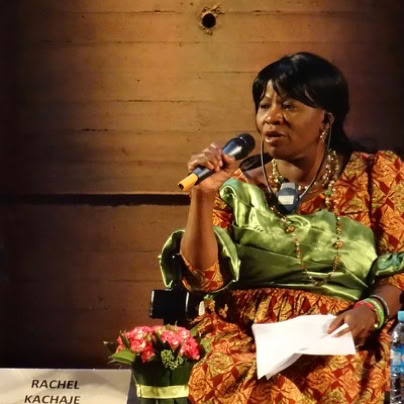There is a history of separating human rights instruments and activities from those of development. However, the Convention is intended as a human rights instrument with an explicit, social development dimension; it is both a human rights treaty and a development tool. The Convention clarifies and qualifies how all categories of rights apply to persons with disabilities, and identifies areas where adaptations have to be made in order for persons with disabilities to effectively exercise their rights, as well as areas where their rights have been violated, and where protection of rights must be reinforced. It also highlights pragmatic and action-oriented measures to be undertaken by States parties in support of development programs that are inclusive of, and accessible to, persons with disabilities. This represents a paradigm shift within the development community, as it identifies disability as an issue to be considered in all programming, rather than as a stand-alone thematic issue. Within this framework, there remains room for disability-specific actions and programming, based on the needs of the specific context. The Convention obligates States parties to undertake proactively the appropriate measures to ensure that persons with disabilities participate in all facets of society, on an equal basis with others.
Mr Ban’s spokesperson Marie Okabe said and I quote “The Convention will be a powerful tool to eradicate the obstacle faced by persons with disabilities,” she said, pointing to discrimination, segregation from society, economic marginalization, and lack of opportunities for participation in social, political and economic decision-making processes.
Disabled Peoples' International
DPI United

A VOICE OF OUR OWN
CRPD Tool Kit
CRPD Ratification Tools Presentation
DISABLED PEOPLES’ INTERNATIONAL (DPI)
UN CONVENTION ON THE RIGHTS OF PERSONS WITH DISABILITIES - DISABLED PEOPLE’S INTERNATIONAL (DPI) RATIFICATION TOOLS

Presentation by Rachel Kachaje, Disabled Peoples’ International (DPI) Deputy Chairperson for Development and Underrepresented Groups at the Africa Regional Conference on Millennium Development Goals and Disability held on 14-19 September 2008,Nairobi, Kenya.
Introduction
On behalf of the Disabled People’s International (DPI), let me take the opportunity to express my gratitude to the organizers of this conference for inviting me to be one of the speakers at this Africa Regional Conference on the Millennium Development Goals (MDGs)and Disability held in Nairobi, Kenya.
Happily, we are here today to look at how the Convention can be used as a tool for enhancing participation and promotion of mainstreaming disability issues in the Millennium Goals Campaign and Development.
WHY DO WE NEED THE CONVENTION ON THE RIGHTS OF PERSONS WITH DISABILITIES
With all of the Human Rights Conventions and other Human Rights instruments that we already have in place, you may well wonder why some people believe that we needed another new Convention specifically for Persons with Disabilities!!!!!!!!!!
650 million persons with disabilities all over the world are being made invisible by external environments, are forgotten when it comes to the enjoyment of civil, political and social rights and are the last to be considered in the many economic, social and cultural policy development and legislative reforms
Persons with disabilities have same human rights as everyone else BUT have been historically invisible in international human rights systems like the Millennium Development Goals and the non-legally binding instruments often not employed or resourced for effective implementation
The Convention on the Rights of Persons with Disabilities is one of the nine ‘’core’’ international human rights treaties (i.e it has a monitoring mechanism), legally binding on countries that become States Parties andelaborates existing human rights in the context of disability. The Convention does not invent a new wheel or special rights for people with disabilities but rather it addresses the invisibility issues.
The Convention on the Rights of Persons with Disabilities as a tool for mainstreaming and development.
A Convention is a legally binding agreement, in writing, between two or more countries. Conventions can also be called ‘’Treaties’’. Countries become ‘’States Parties’’ when they sign and ratify as such they must comply with the obligations as described in the convention. When sufficient countries become States Parties as it has happened now, then the Convention ‘’Enters into Force’’, meaning that it becomes active and States Parties must now act to implement their obligations under the Convention.
What is Ratification and Why is it so Important
It is the wish of DPI that as many countries as possible become states parties to the disability Convention, many people think or may think that the way a country becomes Party to a Convention is to sign it. Signing a Convention does not make a country a ‘’States Party’’, but only makes it a ‘’Signatory’’ to that convention. Being a signatory means that the country has indicted that it agrees with the main idea of the convention, and that it will not take any action to violate a party in the future. So a country need to move a step ahead from being a signatory to becoming a ‘’States Party’’ through the ratification process.
With that in mind, we want as many countries as possible to become States Parties, so that persons with disabilities in as many countries as possible can benefit from the provisions of the disability convention.
How does Ratification Happen?
Ratification is very much dependent upon the country in question, as each country has its own rules and procedures for the ratification of convention. Before engaging in any advocacy to get a country to ratify the disability convention, there is need to know or find out how ratification occurs in your country, and who is responsible for making the decisions to ratify conventions. It is also important to know which actors have informal influence over those decisions made eg in a country where the President or Prime Minister has the official power to decide whether to ratify the convention or not, it is very useful to know who else has informal influence over that decision. Knowing these people can be critical in ensuring that advocacy around ratification reaches the right people and is successful.
After the ratification, the next step is to implement the Convention. Implementation involves States Parties taking whatever actions they need to in order to comply with their legal obligation. The amount of work required for implementation may differ from country to country, and over time questions will arise on the content and how it should be interpreted. This is normal as all Human Rights Treaties go through the same. The good thing is that Government and the Convention monitoring body (the Committee on the Rights of Persons with Disabilities) will work together with the Disability advocates to find answers to the questions that may arise to the spirit and objectives of the Convention.
The ABC’s of Implementation!
Implementing a UN Convention is a complicated and potentially overwhelming thing to attempt! There is so much that can be done that in many cases, NGOs tend to focus only on monitoring the work of the treaty body; but in fact, that is only a small part of what implementation can and should be all about. The framework of a successful program for implementation is the one we call “the ABCs of Implementation.”
A. Adopt a Rights-based Vision
B. Build a Constituency for change
C. Count your successes and setbacks
D. Turning theory into practice!
So what does this mean, and how does it translate into setting an agenda for action for all stakeholders? There is three-step process to achieve this, which are:
1) Environmental Scan
A sort of ‘thumbnail sketch’ of each of the articles of the CRPD. Review this summary and at the same time, think of the work that your organization does, or would like to do, in the future.
2) Match the environment to your own agenda
Think a little more about what your organization is doing, or would like to do. Connect that to the article that is most closely related to that work. In the Ratification Toolkit DPI presented a helpful tool for this type of activity called “SWOT Analysis.”
SWOT Analysis is an effective way of looking at your environment and identifying the Strengths and Weaknesses, and of examining the Opportunities and Threats your organization will face. In the context of implementation of the new Convention, SWOT Analysis can also help you to focus your activities in areas where your group is strong, and where the greatest opportunities lie. SWOT will also help you determine areas of weakness that you may either fix or work around in your efforts to implement and monitor the Convention in your particular country.
3) Develop a vision of full implementation of this right
Now that you have connected your work to a specific article in the Convention, then go to the treaty itself and carefully review the article to see just what it says, what the right involves and how it should be realized. In short, you do your action plan to implement each article as per your review etc.
Millennium Development Goals will fail if they are not inclusive …
The Convention talks about inclusion and full participation of persons with disabilities. Have we ever given a thought that the MDG’s are going to fail? Or we think that they can not fail because they were declared by the United Nations (UN) in 2000 as a policy approach for combating poverty?.
The question is, whether one can expect to achieve the MDG goals just by setting policy targets, without ensuring full political commitment, funding and the inclusion of people in their own development processes. If people are excluded from development processes, then MDGs will only be words on paper. If disabled people happen to be mentioned at all, they are almost always placed under the general category of “vulnerable groups” – and usually as an illustrative example. If development included disabled people too, then the world would have a much better chance of reaching the goals that have been set for 2015. Remember we are talking of 650 million people with disabilities in the world.
Conclusion:
Let me conclude by emphasizing that given all of these factors, the time is now ripe to start reaching out to groups and governments to begin getting them to pay more attention to disability issues, and to do so in a rights-based framework. Let us join hands together to make a positive difference.
I have two suggestions for making a positive difference:
1) The society at large think working with disabled people requires skilled knowledge and expertise that they don't have, and so they forget about disabled people all together. Hence there is need to do awareness-raising that would facilitate equal and full participation of persons with disabilities.
2) The voice of people with disabilities is not heard at the level of decision-making about the MDGs. There are several initiatives and attempts to highlight disability issues but, in general, disabled people organizations (DPOs) lack influential representatives, lack of political will at decisive levelsDisabled people are the ones who have the knowledge and experience to share with development organizations about how best to facilitate their inclusion/or mainstreaming
19 sept. 2008